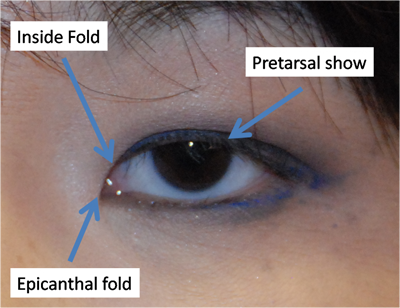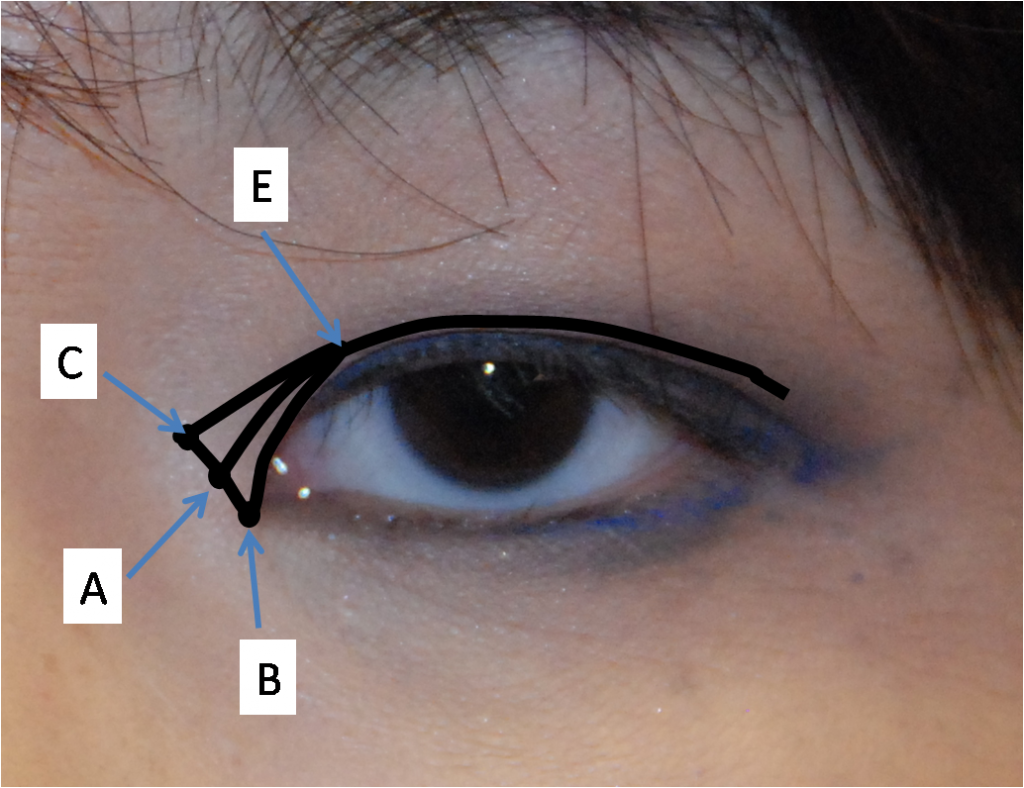I wanted to talk about the various terms that people are using when they consider Asian Blepharoplasty (Seattle’s Dr Young). One is Pretarsal show. Essentially this is the height of skin that is exposed under the crease when the eye is opened. See the picture below. You measure or assess this when the patient’s eye is open and the height that is measured from the crease to the eyelid margin where the eyelash is located is the height of the pretarsal show when the eyes are open. This is different from where the crease actually begins which could be, and usually is, much higher underneath the fold of skin that folds over where the crease begins. When you determine where you put the crease, the amount of skin you take will affect the pretarsal show. I usually use a metal pointer to stimulate where I will make the crease and have the patient open up there eyes. At that point, I will ask the patient if the pretarsal show is high enough. But I usually ask whether the “crease is high enough”. Usually the crease is set between 6 and 8 mm for a small fold. If the pretarsal show is not high enough after placing the metal pointer at 8 mm I usually then think of taking more skin. Then depending on how high the patient wants I usually estimate how much higher and then I multiply that by two which determines how much skin I take.
The other question I ask patients is whether they want they crease to end medially with an inside or outside fold. The picture below shows an inside fold. An outside fold would be end closer to the nose and closer than the fold of skin where the epicanthal fold is located. The epicanthal fold is just the extra skin that covers the fleshy part of the medial part of the eye (which is called the lacrimal lake).
To maintain you ethnicity, I usually like to make the pretarsal show no higher than 3mm and the medial part of the crease is usually an inside fold.
The epicanthal fold is another area that you can treat. Through a different techinque you can make the epicanthal fold more open by transposing the tissue of the epicanthus more medially. This can open up the eye and improve the results of an Asian Blepharoplasty. I use Dr Park’s Z epicanthoplasty for most of my epicanthoplasty procedures. You can read my other blog on Dr Park’s Z epicanthoplasty that I like to do. Here is video on Asian Blepharoplasty and Medial epicanthoplasty.
Thanks for reading, Dr Young
Dr Young specializes in Facial Plastic and Reconstructive Surgery and is located in Bellevue near Seattle, Washington







